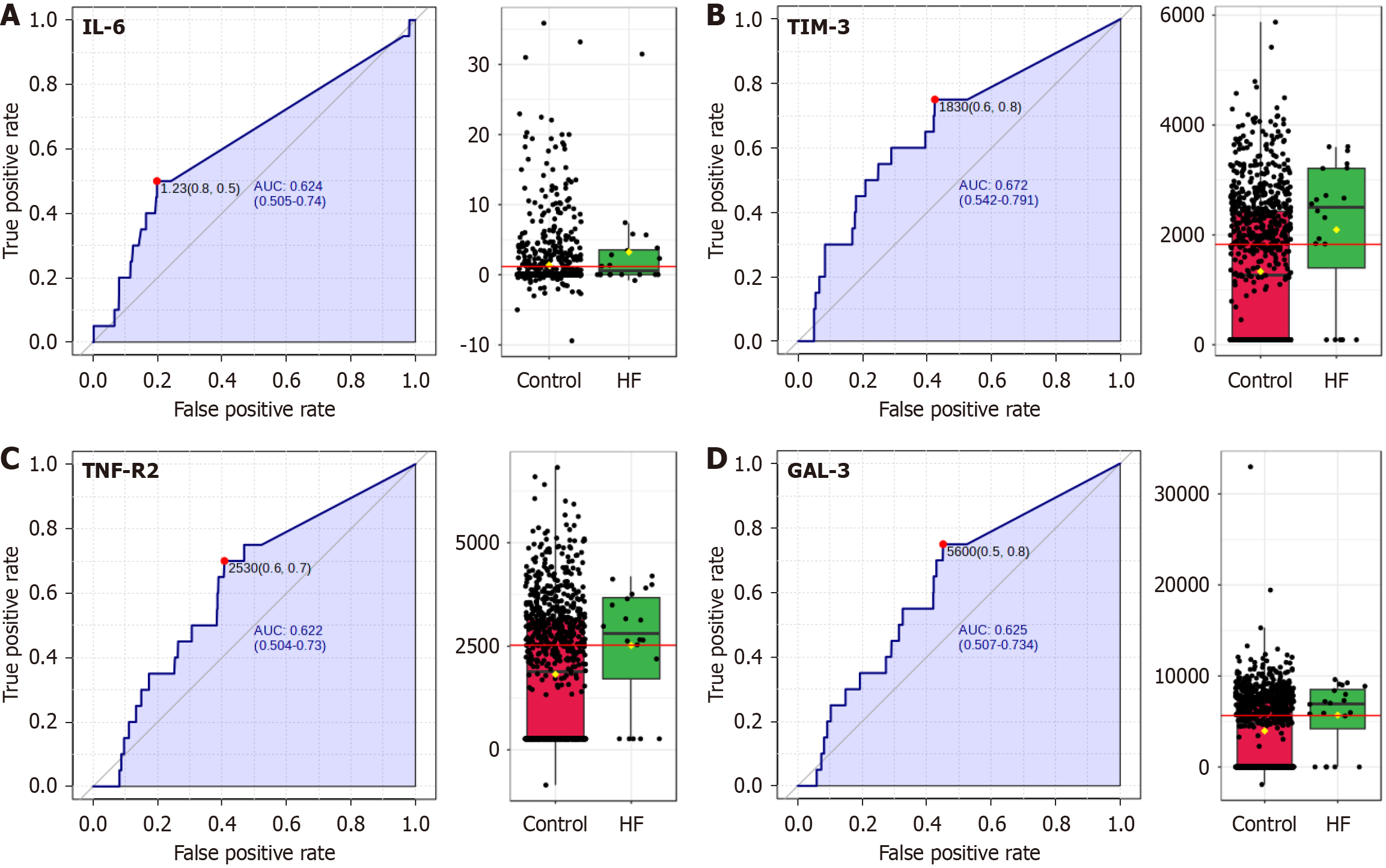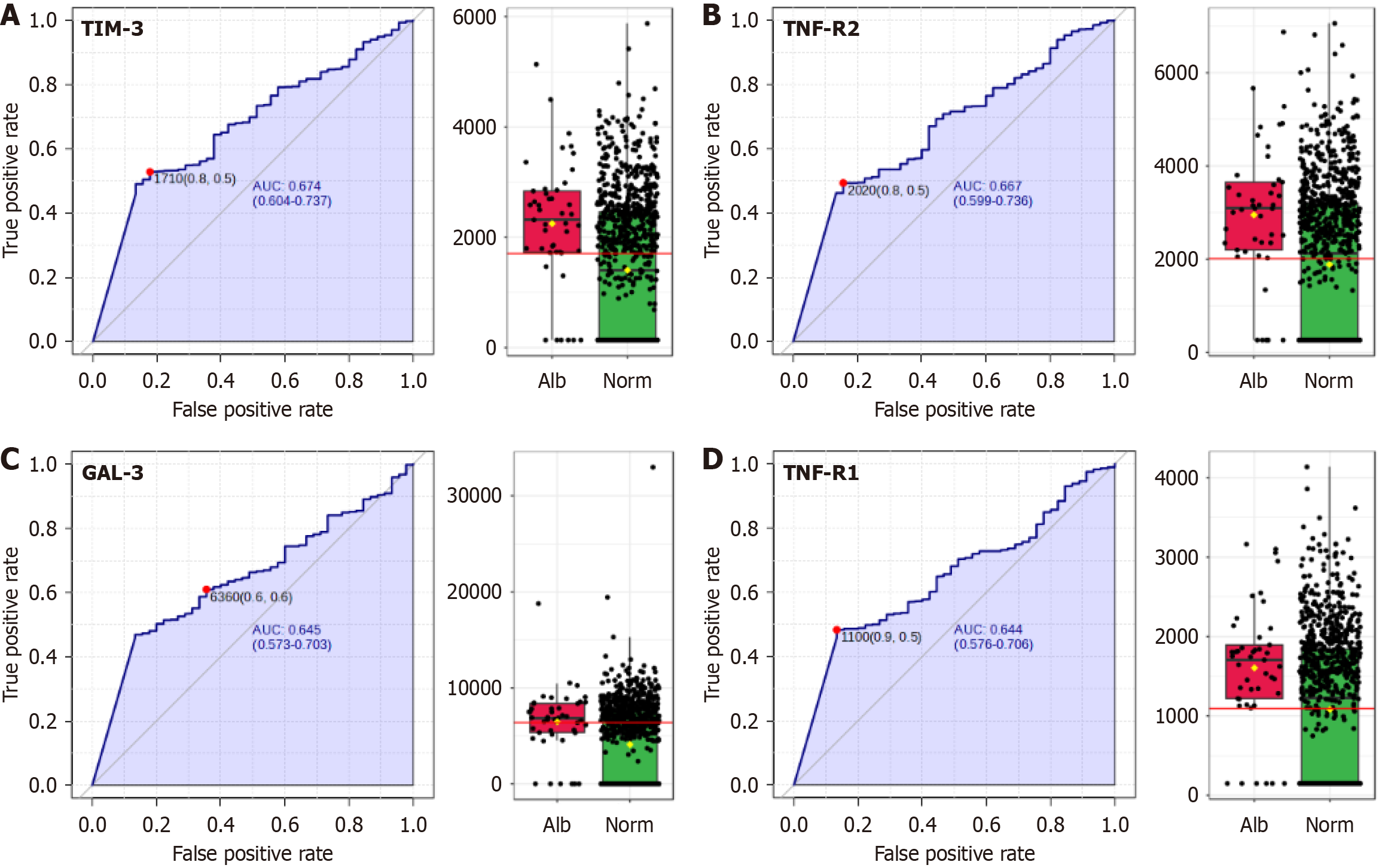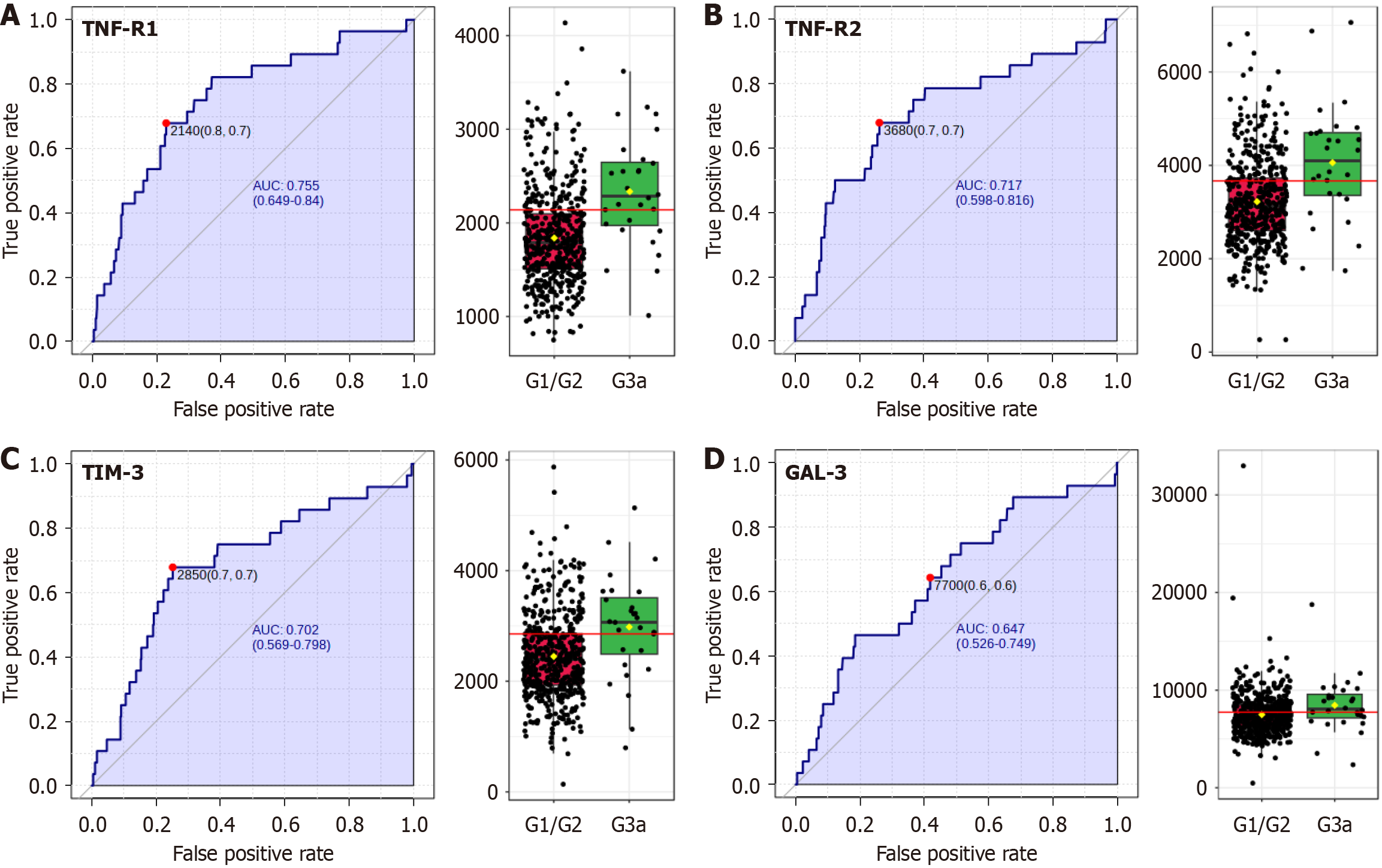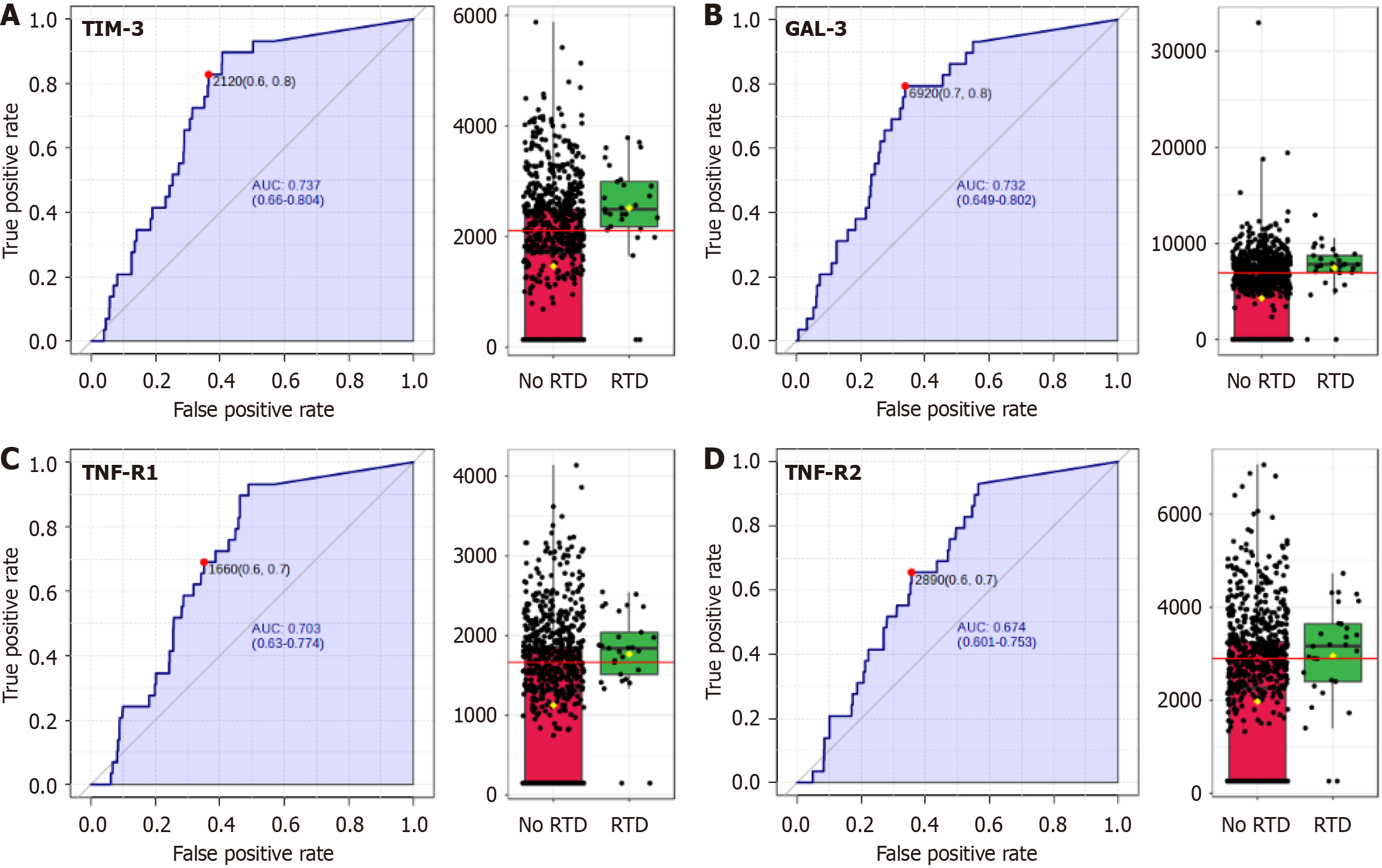Copyright
©The Author(s) 2025.
World J Diabetes. Sep 15, 2025; 16(9): 106002
Published online Sep 15, 2025. doi: 10.4239/wjd.v16.i9.106002
Published online Sep 15, 2025. doi: 10.4239/wjd.v16.i9.106002
Figure 1 Receiver operating characteristic analysis for predicting biomarkers of hyperfiltration.
A: Interleukin 6; B: T-cell immunoglobulin and mucin domain 3/HAVCR2; C: Tumor necrosis factor receptor 2; D: Galectin-3. Left panels show receiver operating characteristic curves of each marker in distinguishing between estimated glomerular filtration rate (eGFR) > 130. The area under the curve values are provided, indicating the overall predictive power of each marker. Right panels: Box plots display the distribution of values for each marker across different groups [eGFR > 130 (heart failure, green columns) and control individuals (G1/G2, red columns)], with the red line indicating the optimal cut-off value. IL-6: Interleukin-6; TIM-3: T-cell immunoglobulin and mucin domain 3; TNF-R2: Tumor necrosis factor receptor 2; GAL-3: Galectin-3; HF: Heart failure.
Figure 2 Receiver operating characteristic analysis for predicting as biomarkers of albuminuria showing the performance of each marker in distinguishing between albuminuria (red) vs normal-albuminuria (green).
A: T-cell immunoglobulin and mucin domain 3/HAVCR2; B: Tumor necrosis factor receptor 2; C: Galectin-3; D: Tumor necrosis factor receptor 1 with the area under the curve values. Box plots on the right, displaying the distribution of values for each marker across different groups (albuminuria vs normal) with the red line showing the optimal cut-off value for each of them. TIM-3: T-cell immunoglobulin and mucin domain 3; TNF-R2: Tumor necrosis factor receptor 2; GAL-3: Galectin-3; TNF-R1: Tumor necrosis factor receptor 1; Alb: Albuminuria; Norm: Normal.
Figure 3 Receiver operating characteristic analysis.
A: Interleukin 6; B: T-cell immunoglobulin and mucin domain 3/HAVCR2; C: Tumor necrosis factor receptor 2; D: Galectin-3. As biomarkers of hypofiltration-3, displaying their performance in distinguishing between prediabetic individuals with estimated glomerular filtration rate (eGFR) < 60 (G3a) and those with eGFR > 60 (G1/G2). The area under the curve values and optimal cut-off points for each biomarker are clearly indicated. TIM-3: T-cell immunoglobulin and mucin domain 3; TNF-R2: Tumor necrosis factor receptor 2; GAL-3: Galectin-3; TNF-R1: Tumor necrosis factor receptor 1.
Figure 4 Receiver operating characteristic curves on the left, showing the performance of each marker in distinguishing between prediabetic individuals with diabetic retinopathy (green columns) and those without (red columns).
A: T-cell immunoglobulin and mucin domain 3/HAVCR2; B: Galectin-3; C: Tumor necrosis factor receptor 1; D: Tumor necrosis factor receptor 2 with the area under the curve values. Box plots on the right, displaying the distribution of values for each marker across different groups [diabetic retinopathy (RTD) vs non-RTD] with the red line showing the optimal cut-off value for each of them. TIM-3: T-cell immunoglobulin and mucin domain 3; TNF-R2: Tumor necrosis factor receptor 2; GAL-3: Galectin-3; TNF-R1: Tumor necrosis factor receptor 1; RTD: Diabetic retinopathy.
- Citation: Mas-Fontao S, Civantos E, Boukichou-Abdelkader N, Moreno JA, Gomez-Guerrero C, Gálvez MIL, Tuomilehto J, Lind M, Gabriel R, Egido J. Increased tumor necrosis factor-receptor superfamily plasma levels are associated with early renal or retinal involvement in intermediate hyperglycemia. World J Diabetes 2025; 16(9): 106002
- URL: https://www.wjgnet.com/1948-9358/full/v16/i9/106002.htm
- DOI: https://dx.doi.org/10.4239/wjd.v16.i9.106002
















